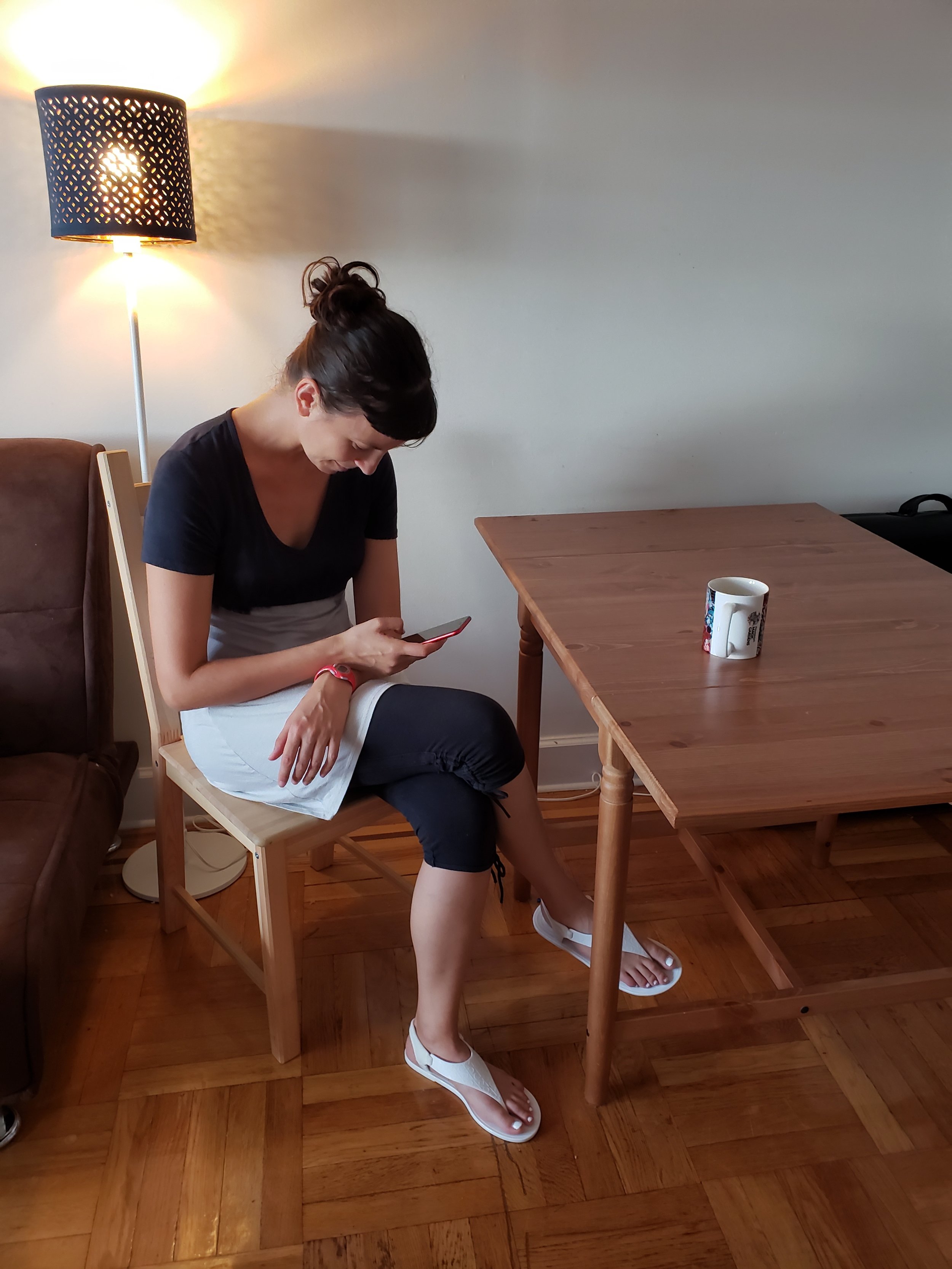Leg crossing...Is it bad for your posture?
/Is crossing your legs bad for your posture? This is one of the most common questions I am asked by clients. The simple answer is yes it’s bad, don’t do it. The more nuanced answer is that people usually do it in a way that makes their posture much worse and gives them little hope of improving.
There’s also conflicting information out there about the effects it has on your circulation and blood pressure and whether the habit can lead to varicose veins, spider veins, or nerve damage. There was even a study that showed that crossing legs improved posture by creating more stability in the pelvis. My nuanced question regarding “stability” in the pelvis is “What kind of stability? Stability by gripping in the legs and abdomen, making you stiff and breathing shallowly?”
Simply being straighter or more stable doesn’t necessarily mean that you are exhibiting natural, good posture. People who succeed in improving their posture learn to change their habits making nuanced adjustments to how they are sitting, standing, and moving.
In my observation, when people cross their legs they tend to end up doing the following:
Tightening the thighs and locking the hip joints
Shortening the inner leg muscles encouraging the knees to go in (which can spell trouble and possibly injury when walking and running)
Shifting their weight to one side, throwing the pelvis off balance and likely loading the discs of the spine more on that side
Either holding the upper body rigidly so that they can hardly breathe or collapsing down into a slump, which also impinges breathing
Throwing the head off balance. The head weighs 10-12lbs, so that weight coming down, just makes everything else more extreme.
Do all of these things have to happen when you cross your legs? No. Will they likely? Yes. Can you change them? Yes, but it’s generally harder to start effectively changing your posture in a cross-legged position. You can fast-track your success by just not crossing your legs and putting your feet on the floor with your knees a little bit apart pointing over your toes (not falling in). If this feels difficult or your feel restless (aka you can’t stand it) your legs may be quite tense.
You can start by giving yourself a reasonable goal of sitting without your legs crossed for 5 minutes and keep practicing for longer and longer periods of time. Think of your feet felting toward the floor and your knees aiming forward, away from your hip joints. This is a fancy way of saying “relax, but stay balanced”. Alexander Technique lessons help people to have a direct experience of feeling relaxed and balanced.
Now let’s move onto why. Why do people cross their legs? Here are some reasons I’ve come across:
Fatigue (I’m guilty of this): To stay upright crossing legs creates extra effort to hold you up.
Lack of postural support (what some might call core strength): Crossing the legs helps stabilize to make up for poor posture and just becomes a vicious cycle. I’ll also note that developing core strength has a lot to do with what you do in an Alexander Technique lesson. It requires coordinating your body better (aka improving your posture), not doing lots of sit-ups…though you’ll do sit ups more effectively if you improve your posture.
Cultural expectations and "aesthetics": Sometime my women tell me that they were taught that keeping the legs together or crossed is proper and feminine. Is back pain proper and feminine? I encourage women to take up their own space. It projects presence and confidence and improves posture (ie. is better for your back).
Lack of confidence: Some people cross their legs to feel more secure and in effect make themselves smaller, exhibiting less effective body language.
Wardrobe: There is some cultural expectation in here, but I think it’s safe to say that most people wearing a skirt or dress aren’t interested in flashing the folks sitting across from them on the train or at a meeting.
Conversational angle: I’m being quite literal here. If you’re talking to a friend on a bench, it might seem quite natural to cross your leg and turn to them.
Do you relate to any of these reasons? Can you think of others?
So, we can make the choice to cross our legs, but here are some alternatives for crossing your legs at the knee (the main culprit) that are less likely to throw you off balance. And the trick is to make it a choice, not a habit and not to do it unconsciously all day.
Cross your ankles. Just keep one foot on the floor for support.
Place one ankle on the opposite knee with the knee that’s up pointing to the side. It’s a more open position and makes it easier to stay balanced side to side.
Switch it up. Vary how you cross your legs.
If you do want to make a choice to cross your legs as described above or even at the knee, do it like this (or come for some Alexander Technique lessons to get some expert guidance)
Don’t pull to one side. Stay evenly balanced on both sits bones.
Be conscious of the one foot that is on the floor and make sure you’re really letting it connect to the floor.
Aim the flat part of the top of your head up to the ceiling without straining. Try to stay relaxed upright.
To summarized here, the main points to remember so you can start changing your leg-crossing habit and improving your posture now are:
Cross your legs less or not at all - place your feet on the floor.
When you catch yourself crossing your legs, consider why you might be doing so. This may help you notice when you’re doing it again and understand the habit better.
When you must cross your legs, vary how you do it and do it in as balanced a way as possible.
Don't cross your legs all day. Pick your moments, ie 20 minutes at a cocktail party...not for 8 hours at work. Even if you cross your legs for cultural or aesthetic purposes, your legs may not even be visible under your desk!
How bad something is for your posture depends not just on what it is, but how you do it, and how long you do it for. Practice keeping both feet on the floor more often and make leg-crossing a choice not a habit.
Improve your posture without the guesswork. Our free training shows you why you struggle with sitting or standing straight and how to improve. Say goodbye to uncomfortable habits and stand tall with ease. Grab Your Free Training Today!





